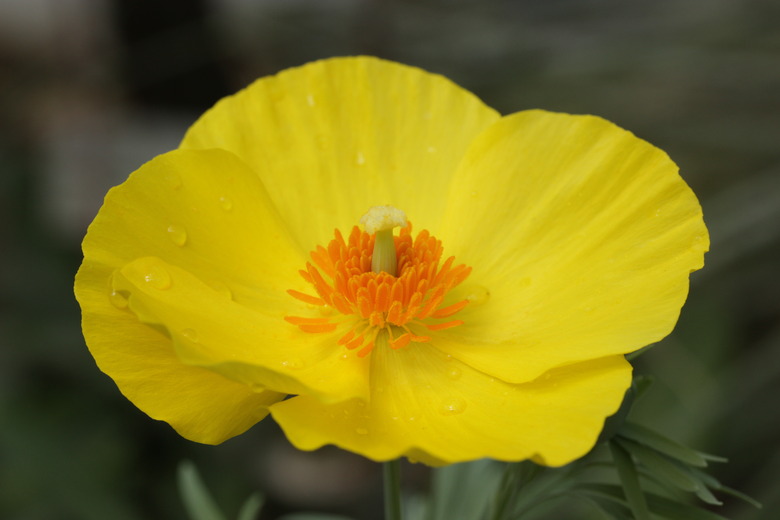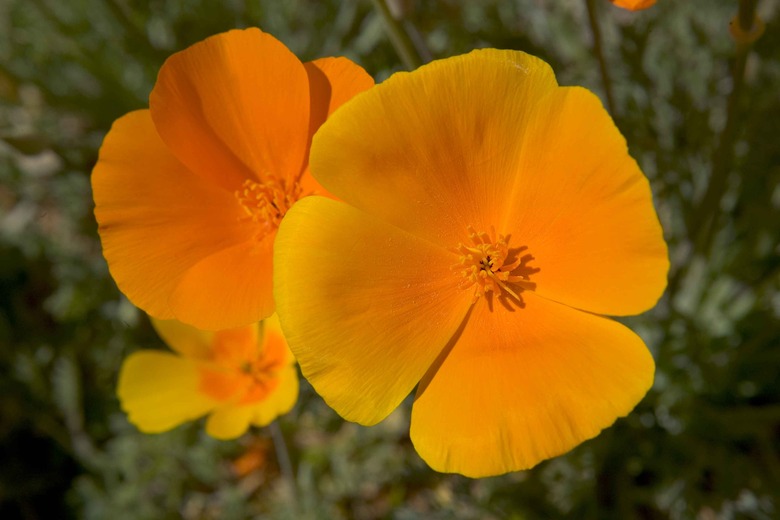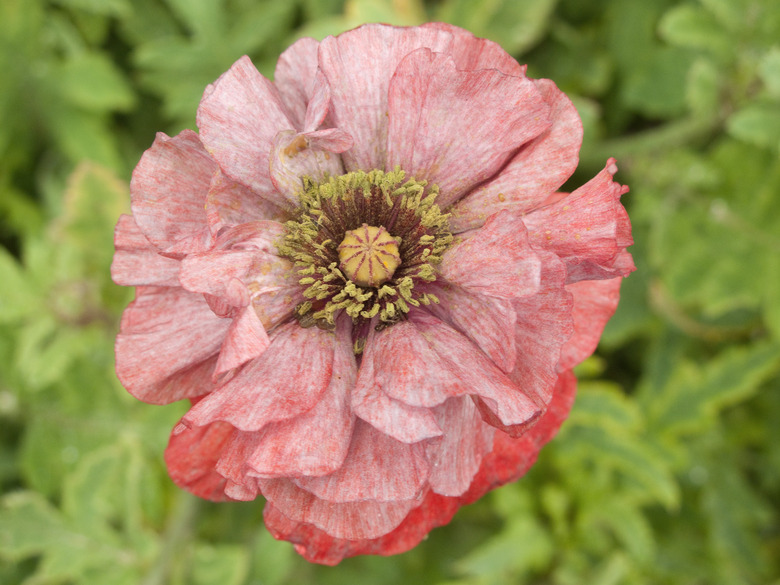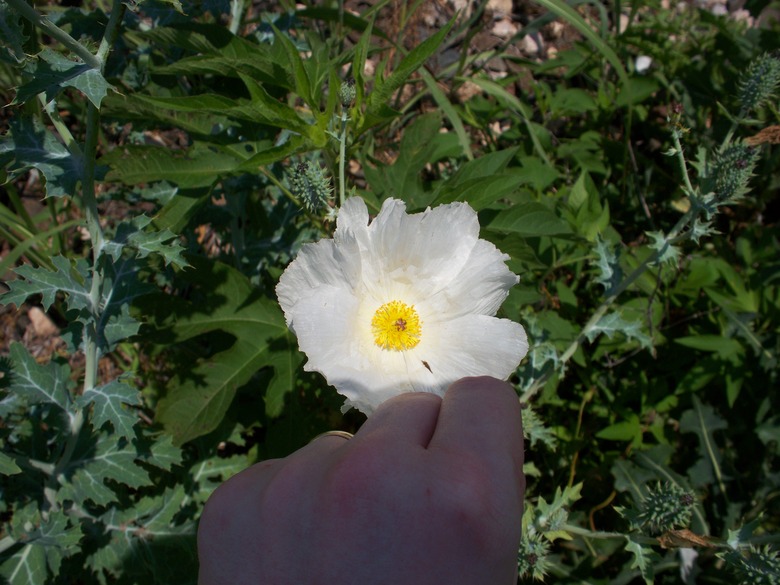Growing Poppies In Texas
Texas is a vast place with a wide range of environments and climates, but poppies can grow in most areas in either full sun or partial shade, depending on the variety.
Dozens of flowers share the common name "poppy," most of which belong to the plant family Papaveraceae. Several poppy varieties are native to Texas, including the well-known Texas white prickly poppy (Argemone albiflora ssp. texana), but these are not the only types of poppies you'll find growing in this state.
Also common are the annual California poppy (Eschscholzia californica) and the Flanders poppy (Papaver rhoeas), also called a red corn poppy, field poppy or red poppy.
Poppy Flowers Common in Texas
Poppies are among the most common wildflowers in Texas. Some are native, and some are common, although not actually native to the state.
Poppies Native to Texas
Texas native poppies include the white prickly poppy, the Mexican gold poppy and the Mexican tulip poppy.
The white prickly poppy includes various species in the Argemone genus, all of which are types of prickly poppies (sometimes spelled as one word, pricklypoppy).
Some of these sport "Texas" in their common name, including Argemone aurantiaca, called Texas prickly poppy, and the Texas white prickly poppy, also known as the Texas Bluestem prickly poppy. These are all prickly with leaves and stems that have fine hairs or outright thorns but may have extremely showy flowers. Some are annual, some are biennial and some have characteristics of both.
The Mexican gold poppy (Eschscholzia californica ssp. mexicana), an annual that grows about 2 feet tall, is also native to several other western states, including its namesake California but also New Mexico, Arizona and Nevada.
The Mexican tulip poppy (Hunnemannia fumariifolia) was not thought to be native to Texas until a stand was discovered in the Big Bend National Park in southwest Texas, according to the Lady Bird Johnson Wildflower Center. It is a perennial, about 18 inches high, with yellow flowers.
Other Poppies Common in Texas
You can also readily find the Flanders poppy under all its common names and the Shirley poppy, which is a cultivar of the Flanders poppy (Papaver rhoeas 'Shirley Poppy').
Texas A&M University reports that the red corn poppy is an annual native to Europe, although it now grows wild across the U.S. As its name suggests, it sports a red bloom featuring purplish centers.
Growing Poppies in Texas
There is no definitive guideline regarding growing poppies in Texas because Texas incorporates multiple climates and soil conditions, and the various varieties of poppies also have specific requirements. However, all poppies require well-draining soil.
Let's consider the requirements of the most common poppies.
Tip
Because poppy seeds are tiny, plant poppies by mixing them with sand before sowing to help ensure an even spread.
Growing Red Corn Poppy
This poppy is an annual that blooms in the heat of summer in USDA hardiness zones 3 to 10. In general, poppies transplant poorly, so sow the seed in late fall or early spring directly into a garden bed that receives full sun.
There is no need to bury the seed deeply; just rake some soil over the seed and keep the soil moist until germination, which usually takes 7 to 10 days.
Poppies need little fertilizer and self-sow readily, so plants will likely continue to come back the next year and many years after. In fact, you may want to deadhead the flowers to avoid too many new plants each year.
Growing Prickly Poppy Varieties
Many areas of the U.S. provide information for home gardeners and commercial farmers on how to control prickly poppy, not how to cultivate it, since some species can be invasive, in particular the Mexican prickly poppy, according to the University of Florida IFAS Extension.
Prickly poppies have deep taproots and can reach 3 to 5 feet tall. It has naturalized in areas that have long, hot, dry seasons like much of Texas. It's a great pollinator, attracting bees as well as other critters such as flies and beetles.
As with most other poppy varieties, it transplants poorly due to its taproot, so scatter the seeds outside in fall or late spring in USDA zones 7 to 10. For fall plantings, you'll have flowers in spring and then again in the fall for spring plantings.
Prickly poppies are good cut flowers with their showy, yellow blooms, which can be as large as 6 inches in diameter.
Again, the primary challenge when growing prickly poppy is managing its spread, so deadhead it before it produces seed and monitor your yard for stray seedlings.
References
- Aggie Horticulture: Red Corn Poppy/Flanders Poppy
- Texas A&M AgriLife Extension: Poppy
- Texas Highways: The 3 Best Places to See Poppies in Texas
- Lady Bird Johnson Wildflower Center: Hunnemannia fumariifolia
- Cornell University: Shirley Poppy
- University of Florida IFAS Extension: Mexican Prickly Poppy: Biology and Control



